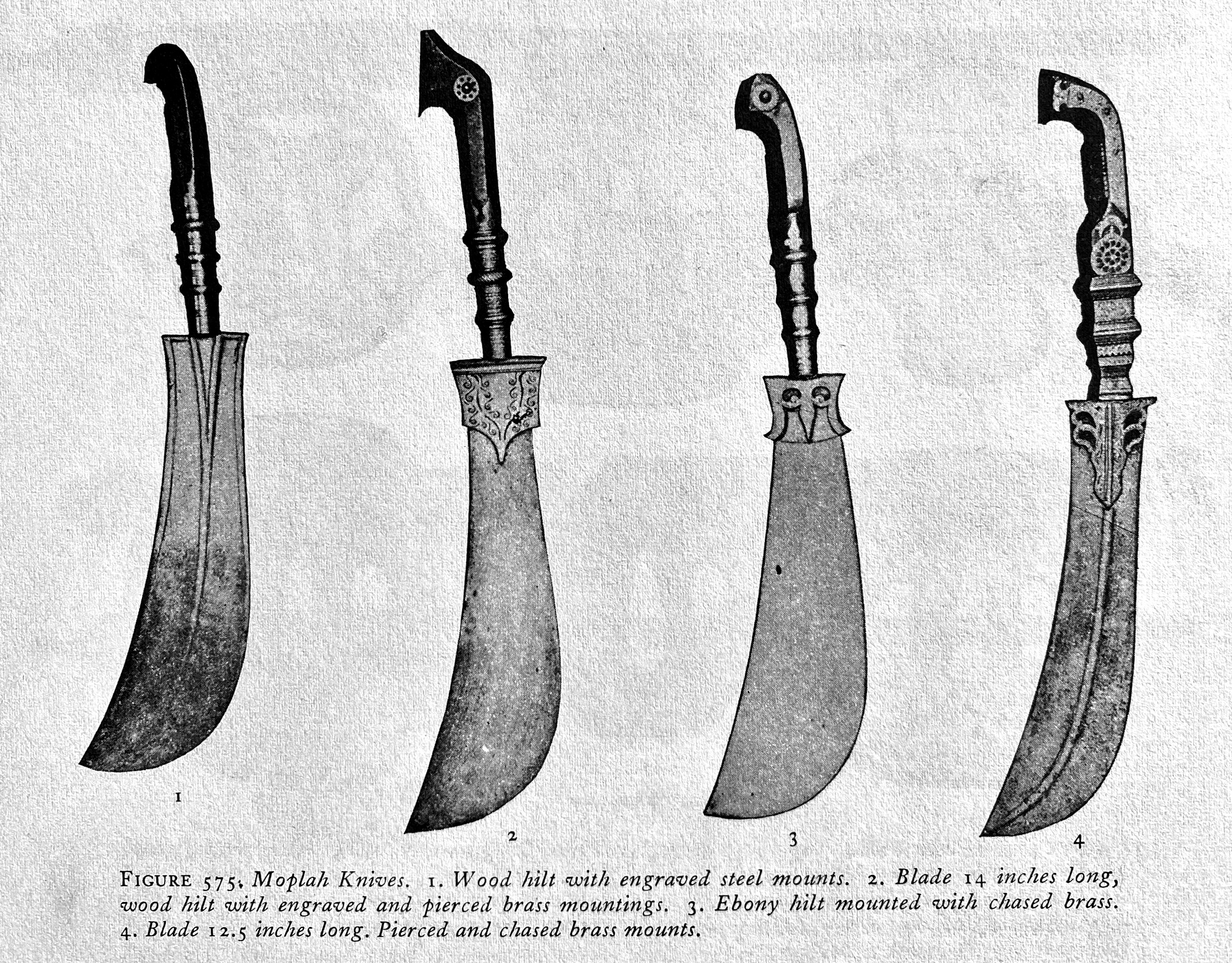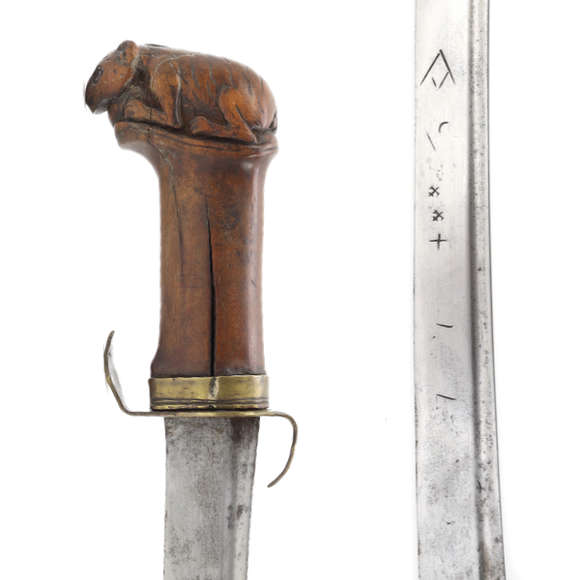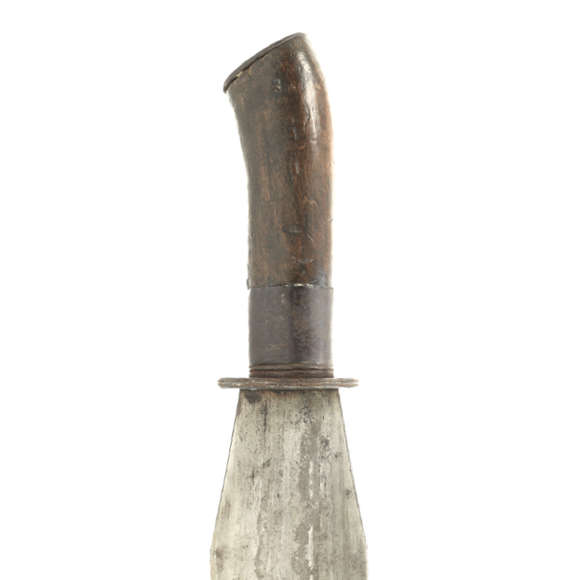Language: Probably a British interpretation of the word Mapilla
Source: Egerton, 1880
Description
The Moplah sword originates from the Malabar Coast in South India. It was named after the Muslim communities of the same name, also known as the Moors of Malabar, today more commonly described as Mappila. They are thought to have descended from Arab spice traders that settled in the area as early as the 7th century A.D.
Moplah swords are characterized by having wide, forward curving blades with a concave edge. Some of them are double-edged. Their decoration is typically a blend of Islamic and local South Indian motifs.

A Moplah sword, 19th century.
Mandarin Mansion inventory 2022.
In the literature
Egerton:
The knife or bill-hook referred to in these extracts, has evidently been designed for the convenience of cutting through the thick underwood, such as found in the jungles of Mysore and Coorg whose "bamboo brakes are as intricate as the woolly curls of an Abyssinian". A somewhat similar knife or sword is used by the Moplahs, who are Arabs settled on the Malabar Coast.1
-Lord Egerton of Tatton, 1896
Plate accompanying the above section:

119-125. Swords; "Ayda Kattí;" broad, slightly
incurved blades; ivory hilts, inlaid and mounted
with pierced and chased brass work. Used by
the Moplahs of Malabar. L. 22 to 24 in.: L. of
blade 15 to 17 in.; W. 2 1/2 to 4 in. (Fig. 17,
No.119.) (8818.-'55.)
128. Sword;"Ayda Kattí." Buffalo-horn hilt;
chased silver mounts. Malabar. L. 24 in.;
L. of blade, 19 in.;W.2 in. to 3 1/2 in. ;
L. of blade 19 in. ; W. 2 in. to 3 1/2 in. (Fig. 17,
No. 128.) (8794.-'55)
The numbers behind the inventory numbers indicate when they were collected, in this case both in 1855. The absence of names means they were from Egerton's own collection. The above mentioned Moplah swords are now held in the Victoria & Albert Museum, accession numbers:
119: 2798(IS)
120: 2799(IS)
121: 2801(IS)
122: 2807(IS)
123: 2805(IS)
124: 2855(IS)
125: 2803(IS)
127: 2851(IS)
128: 2852(IS)
Stone:
MOPLAH KNIVES The Moplah. Indigenous Mohammedans of Malabar have a curious sword, or knife, of their own. It has a light, broad, double-edged blade curved at the end. The hilt is straight and without a guard. The hilt mounts and reinforcing pieces on the blade are of brass of silver and are elaborately pierced and engraved. The sword is carried without a scabbard, blade up, with the handle thrust inside the belt at the back. Fig. 575. Egerton calls this weapon an ayda katti. 2
-George Cameron Stone, 1934

At least three of the Moplah above were bequeathed to the Metropolitan Museum in New York after Stone's passing. Accession numbers:
1: 36.25.937
2: 36.25.935
4: 36.25.936
Notes
1. Lord Egerton of Tatton; Description of Indian and Oriental Armour. London. 1896. Page 80.
2. George Cameron Stone; A Glossary of the Construction, Decoration, and Use of Arms and Armor in All Countries and in All Times: Together with Some Closely Related Subjects. Portland, Maine. Southworth Press. 1934.






